[ad_1]
Omair Tariq climbed into his gleaming black Tesla Model S one Friday this summer, cued up a ballad by a Pakistani pop singer, and drove from his minimalist white office in prosperous west Houston to a gritty north-side neighborhood, on a mission to explore the links between his past and his present. The founder and CEO of Cart.com, a tech start-up that’s raised nearly $400 million in venture capital, Tariq sold jewelry with his wife some twenty years ago out of flea markets in the Greenspoint area that he was visiting on this sizzling morning. Wearing pointy, buckled dress shoes, artfully faded jeans with an Hermès belt, and a black shirt unbuttoned halfway down his chest, he cut a rakish profile as he walked the windowless halls of the International Market Place, which occupies a yellowish two-story concrete edifice next to a welding school.
Cart.com, which helps retailers manage and process their online sales, already counts among its clients such giants as Dollar General and GNC, as well as hot smaller brands including Austin’s Howler Bros. and Florida-based Haymaker Coffee. On one hand, the e-commerce start-up operates in an entirely different universe from the scrappy upstarts at the flea market—shop after tiny shop selling everything from jewelry and jerseys to car-wheel rims and trunk-size subwoofer boxes—and yet Tariq marveled at the parallels.
He saw the aisles of the market as analogous to the internet, because “everybody is fighting for the attention of the same people and the same amount of money they have.” You just have to be better than the next guy, he explained. In the digital world, that means efficiently bidding on Google keywords and pinpoint targeting on Facebook. In the flea market, for him it had meant wearing a yellow sign and walking around trying to lure people to his and his wife’s little fifteen-by-fifteen-foot shop. “I would stand at the door, and every person who walked in, I was like, ‘Are you looking for something? Do you like jewelry?’” Tariq recalled.
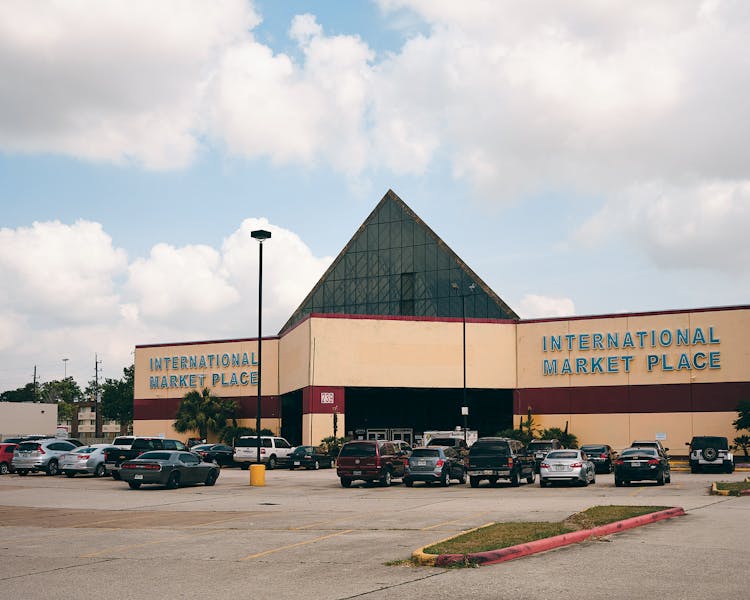
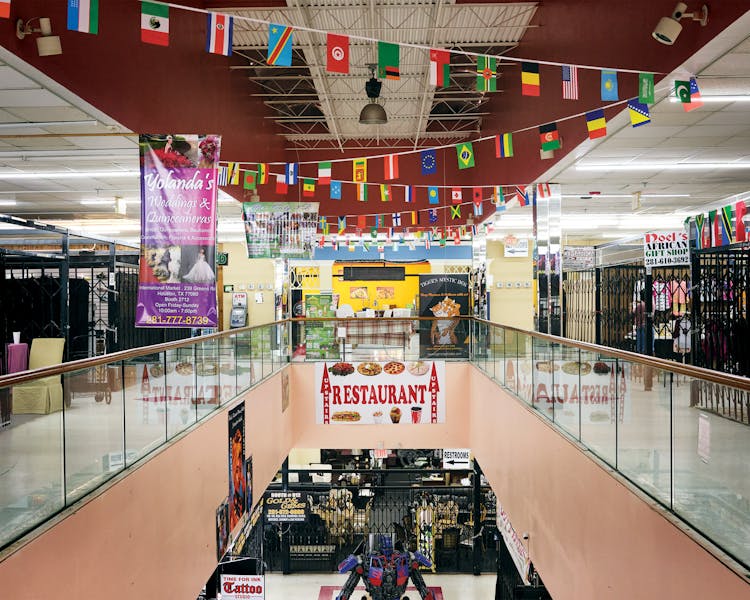
He also noted some contrasts. When you’re running a flea market booth, he pointed out, “there’s no such thing as growing the business to a certain point and only then making money”—a common tactic among start-ups (including his own) that raise gobs of venture capital. For the kind of cash-strapped hustlers who set up here, “You’ve gotta make money on day one, man.”
It’s tempting to view Tariq’s story as an affirmation of the American dream. Indeed, he arrived from the other side of the world and bootstrapped his way from humble beginnings to the top of the tech start-up scene in Texas. What’s more, in Houston, where they make up nearly a quarter of the metro’s 6.8 million residents, immigrants are 53 percent more likely to be entrepreneurs than their U.S.-born neighbors, according to a study by the American Immigration Council. Yet Tariq is also somewhat of an extreme example, as many immigrant entrepreneurs who start small never manage to make the leap that he did. “You have no idea how hungry we were,” he told me, chalking up the difference to pure hustle. But that’s only part of the story.
Before the flea markets, before he lived in Texas, Tariq grew up in Dubai, where his father worked for a small travel agency and his family lived “hand to mouth, week to week,” he told me. A gifted student, Tariq finished high school two years ahead of schedule and dreamed of working for NASA. After his parents decided they were fed up with feeling like they could never get ahead in Dubai and his father landed a visa and a job in Houston, they all eventually moved to Space City.
This was shortly after September 11, 2001, and the Tariq family, like many immigrants, settled in Greenspoint, in a large apartment complex. Omair quickly learned that, despite his impressive academic background, his NASA plans were going to have to be shelved. Only American citizens can work for the space agency. A Muslim Pakistani citizen from the United Arab Emirates wasn’t about to get a pass after 9/11, no matter how talented. He had pictured himself studying astrophysics at Rice University, but now everything was on hold as he figured out his future.
Not yet eighteen, Tariq took a job at a gas station a few blocks from the apartment, working the register, cleaning the toilets, and doing whatever needed doing. On the side, he made deliveries for a pizza joint across the intersection. After about a year and a half, he decided to bring his high school girlfriend, Sundas Khan, to Houston from Pakistan. They both aspired to earn college degrees, and after a couple of years struggling to afford that dream, Tariq realized his minimum-wage work wasn’t helping nearly as much as he’d like, no matter how many jobs he cobbled together. The couple decided to start a business—a weekend stall at the Armadillo Flea Market. Armed with a few hundred dollars borrowed from friends and family, Khan set about buying jewelry from Pakistan and India, relying on her mother in Karachi as her source.
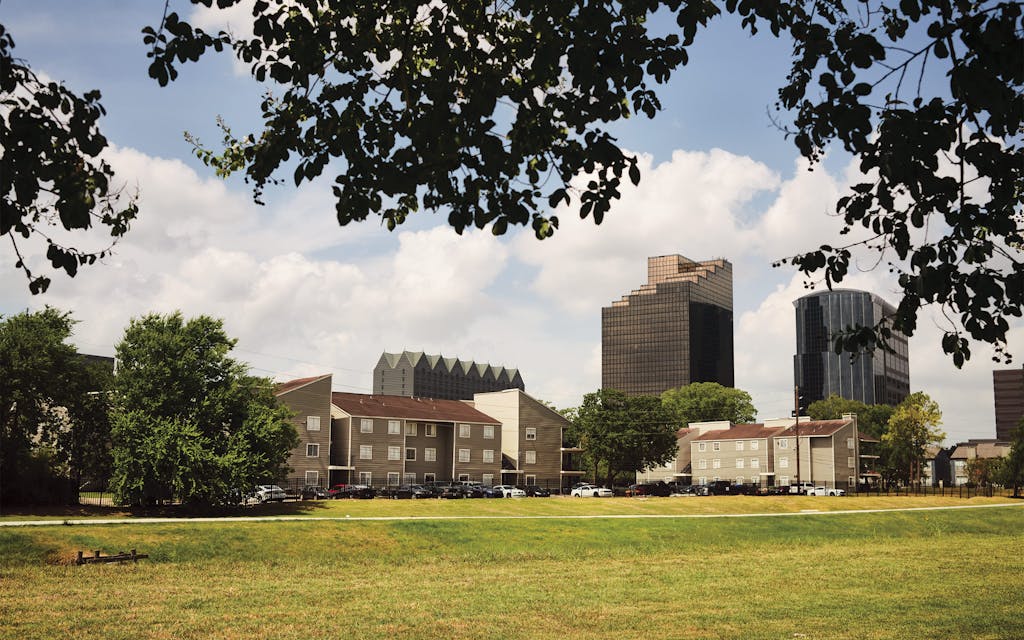
The idea for the business—that Hispanic women in Houston would love the elaborate designs of South Asian jewelry—turned out to be a good one. Customers at the flea market found the pieces at once familiar and exotic. Tariq and Khan did well enough that they added clothes and shoes to their inventory and could hire a few employees. They expanded to a second location, at the International Market Place, and a third market farther south, on Hillcroft Avenue.
The three shops ultimately hauled in several thousand dollars a week in profit, Tariq said. He paid some of that money back to his employees in a profit-sharing program he devised, and he used some of the rest to pay his and Khan’s way through the University of Houston, where he had decided to study finance instead of astrophysics—“because I was really good with numbers, and it was something I could pursue while also working.”
Eventually his coursework, combined with his street smarts from the flea market, allowed him to leave the jewelry booth behind and land a corporate job, as a finance manager for a haircare-products manufacturer. A year later he moved to Blinds.com, an ecommerce company that sold window treatments. It was 2010, and Tariq by then had his U of H finance degree and a son with Sundas, whom he’d married. He enrolled at Rice and pursued an MBA while working his way up at Blinds.com. After Home Depot bought the company four years later, Tariq became an executive at one of the country’s largest retailers. “I knew from the flea market how to take something from zero to one. And I learned how to take something from one to ten at Blinds.com, and then from ten to one hundred at Home Depot,” he said. “Man, talk about getting lucky—that just doesn’t normally happen in an eight- to ten-year period.”
At Home Depot he learned about running ecommerce at a large scale, including the power of so-called vertically integrated retail systems, where everything from the online storefront to marketing operations to order fulfillment works on the same platform. It was more efficient that way than cobbling together multiple solutions. But most companies can’t afford to build custom technology, as Home Depot had. By 2020, with the COVID-19 pandemic leading every kind of company to rely on online sales, Tariq saw an opportunity to strike out on his own again.
Many businesses looking to sell online turn to Amazon, which allows external retailers to set up shop on its platform and offers worldwide reach—but at great cost. Sellers on Amazon’s marketplace pay fees to the platform and fork over a hefty percentage of their sales as well as their customers’ data. The Canadian company Shopify, on the other hand, has become the dominant platform for retailers opening their own digital storefronts, where they have more control but must rely on a patchwork of third-party apps to get an ordered item to a customer.
Tariq decided to create a third way—a one-stop source for every piece of technology and logistical support that a brand could need to sell things online—and promptly started raising money to build a giant-killer of a company. The idea was both hidden in plain sight and a wildly ambitious rejection of the status quo—just the kind of opportunity an immigrant might seize.

Nearly half of the companies in the Fortune 500—the largest publicly traded firms in the country—were founded by immigrants or their children. More than a quarter of Main Street businesses in the U.S. were founded by immigrants. And a 2018 study found that 55 percent of so-called unicorn start-ups—those valued at more than a billion dollars that have not yet become publicly traded—were started by immigrants. Andrew Lim, director of research for the nonpartisan American Immigration Council, points to a couple of reasons for such figures. “One, people who come from another country to start a new life here, where they might not have friends and family, are perhaps inherently more likely to take a risk, including the risk of starting a business,” he told me. “And two, because immigrants tend to have smaller social support networks here, they have fewer opportunities—so starting something of their own may be necessary for them.”
Of Texas’s more than 389,000 immigrant entrepreneurs, about a third live in Houston, Lim said. Many of them sell basic goods and services to their own communities. Call it subsistence entrepreneurship, simply getting by. Studies have shown that first-generation immigrants, often struggling with language and cultural barriers, tend to remain stuck with low economic status compared with their U.S.-born peers. Yet their children more than make up for it, outpacing their peers in economic gains.
Despite significant obstacles, immigrants also often possess certain entrepreneurial strengths—notably, the ability to recognize opportunities. A 2016 study found that “cross-cultural” experience can help in spotting openings to import successful ideas from elsewhere. “A temporary or permanent migrant can decide to replicate a profitable product or business model available in one country but not in another,” wrote researchers Peter Vandor and Nikolaus Franke in the Harvard Business Review. That’s precisely what Tariq and his wife did with their jewelry business. Diverse backgrounds might also make immigrants more creative. “Interacting with two or more cultural contexts can help immigrants combine diverse ideas, solutions, and customer problems in order to create something entirely new,” the researchers found.
If ever there were a place where entrepreneurs should thrive, it’s Houston. “The founders of Houston came in through the port and saw this boring, flat, hot, humid piece of land and decided it would be a great city for business,” said Rafael Alvarez, a faculty member at Rice’s Jones Graduate School of Business and inductee of the national Immigrant Entrepreneur Hall of Fame. “It doesn’t matter where you come from and what you look like. There was no old money here, no old families. If you had a great idea and were willing to work, this was a place you could make it happen.”
If ever there were a moment when such a mindset should matter, it’s now. As the energy business transitions away from fossil fuels, it follows that Houston’s large population of immigrants, and their gift for entrepreneurship, should be a major asset in the effort to diversify the city’s economy beyond oil and gas. “What is it that Houston has in store? I don’t know,” Alvarez said. “But something great is in store for Houston because of the immigrants here.”
Greenspoint’s population is roughly 67 percent Hispanic and 27 percent Black, with the remainder a smattering of Asians, non-Hispanic whites, and other small groups. That’s also a good rough breakdown of the vendors and shoppers at the International Market Place on the day Tariq visited. He couldn’t help noting that not a single vendor had stopped us to try to sell us something, as he would have back in his time working there. He surmised that he and Sundas had been simply more driven than most. “It was insane how aggressive we were,” he said.
To further stand out in their flea market days, for instance, they instituted an unconventional returns policy to foster loyalty. “We said, ‘We’ll sell you this, and if it breaks, bring it back. We’ll give you another one.’ Now, for Macy’s to do that would be totally expected. But eighty percent of the vendors in a flea market are not going to do that,” he said.
Sundas also put a chair and a mirror in the middle of the stall and started offering eyebrow threading, on the thinking that having customers sitting still for fifteen minutes would lead them to spot more items they might want to buy. Tariq calls the eyebrow-threading a “Trojan horse”—in that it promised one service but actually existed to sell everything else. He put that strategy to work again later at Home Depot, by offering free measurements for countertop installation, say, in order to gather data about customers’ homes with which to make personalized product offers. And Cart.com similarly offers one service as a gateway to others.
Tariq credits some of his breakout success to simple good fortune. But whatever mix of savvy and hustle and good breaks combined to propel him, his hard-charging start-up ticks all the boxes to fulfill Alvarez’s hope for the future of Houston. An immigrant-led, tech-enabled logistics company in a port city is a perfect fit on paper. And yet, in late 2021, a few months before Tariq’s visit to his old flea-market stomping grounds, his company announced its headquarters would move to Austin.
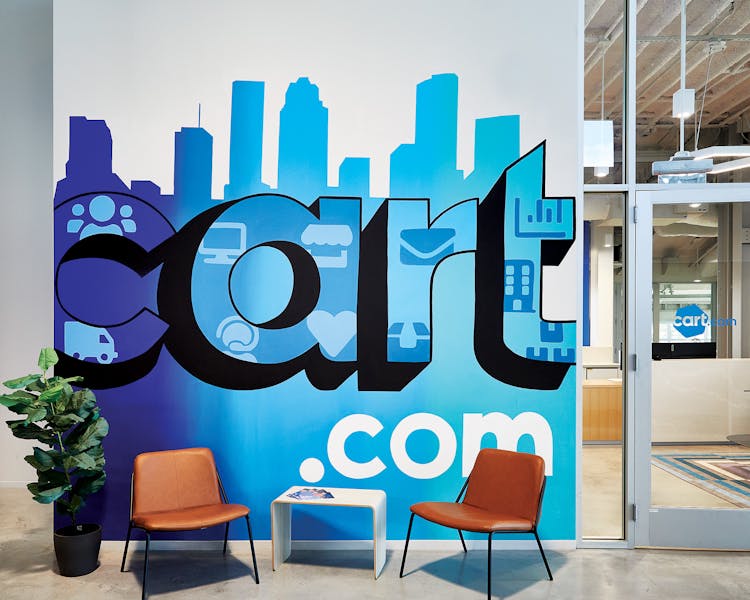
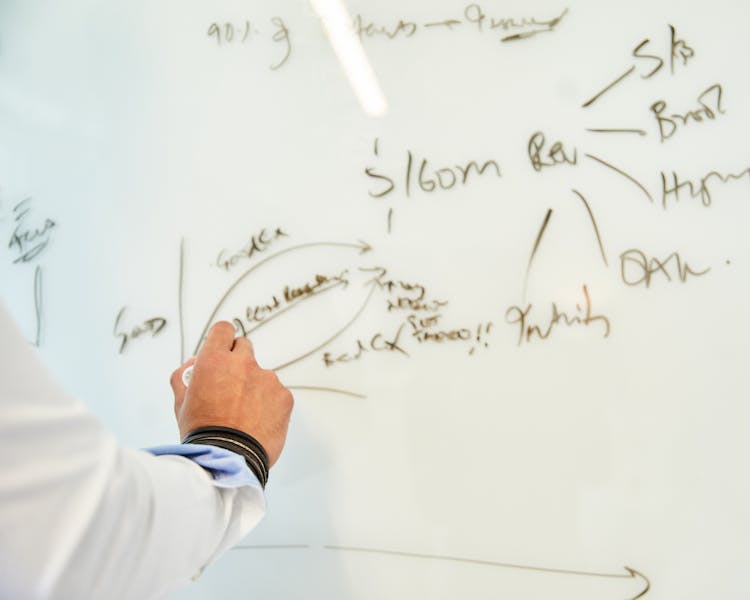
Tariq isn’t leaving his adopted hometown. He’ll continue working from the Houston office, but, “the talent we’re hiring from some of the best companies—in San Francisco, Seattle, New York—they want to be in Austin,” he explained. “We actually had a couple of executives come here and then decide to move to Austin after a few months. After that, I was like, ‘Man, I love Houston, but I just don’t think it’s the right thing for Cart.”
That a star start-up relocated to a rival city should sound an alarm for Houston—and heighten the urgency to build out its tech sector. Incubators such as the long-awaited Ion building in Midtown, which opened last summer, aim to build momentum and culture and resources around start-ups. Yet Houston remains far behind many comparable cities in such support for entrepreneurs.
Still, the city has a promising talent pool—and, here again, immigrants figure prominently. According to a report by the Center for Houston’s Future, by 2036 some 57 percent of new jobs in the area will be held by immigrants. According to the American Immigration Council’s research, more than a third of the city’s STEM workers are already immigrants. “That’s a huge number—much higher than other geographic areas we’ve studied,” Andrew Lim told me. “That’s potentially transformative.”
Meanwhile, the competitive landscape for Cart.com has begun to shift. Shopify’s stock has plummeted nearly 75 percent since December, bringing the company’s worth down from $177 billion to just $41 billion. Partly that’s a result of changing shopping habits and alarming levels of inflation, but it also reflects investors’ increasing awareness of the problem Tariq identified: Shopify’s gaping hole when it comes to logistics. While Shopify’s struggles could spell opportunity for Cart.com, there’s a new complication with Amazon’s recent rolling out of a new service, Buy With Prime, that competes with Shopify more directly by extending the Prime brand to third-party sites—while offering access to the world’s most powerful fulfillment and delivery network. That puts Amazon more directly in competition with Cart.com as well. It’s too soon to say what that will mean for the start-up, but Tariq likes his positioning as the full-service option.
Economic pressures also weigh on Tariq’s company. Whereas he has spent much of his mega haul of venture capital on acquiring seven other companies and stitching them together to grow as large as possible as quickly as possible (the company already employs some 1,500 workers), the threat of recession and the slump in tech stocks has investors betting more cautiously, hesitating to plow more money into largely unproven entities such as Cart.
For Tariq, it’s time to build with what he’s got—which, lucky for him, includes a few outsider advantages. He’ll be wise, especially, to remember the old flea-market lesson about making money from day one—or at least as soon as possible.
[ad_2]
Source link

